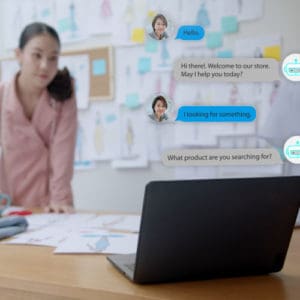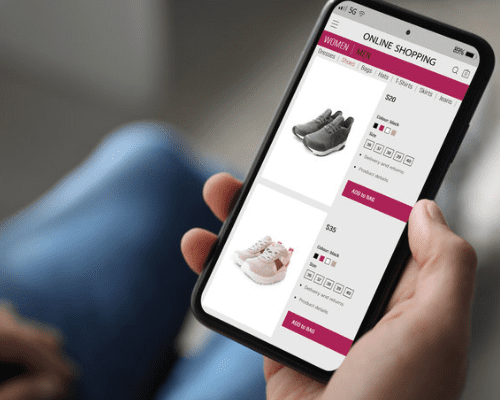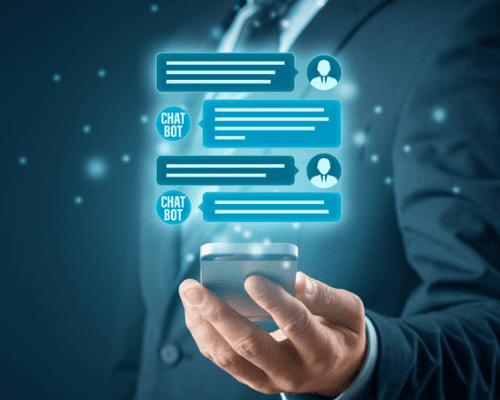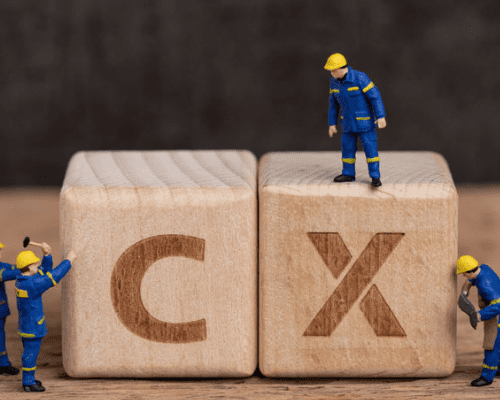A frictionless, omnichannel experience is a customer engagement requisite for complete digital transformation. However, to truly drive sales and foster strong relationships, a well-planned and holistic omnichannel experience creates a strong value differentiator that allows your company to stand out against the competition.
When it comes to B2B customer service, companies encounter unique challenges that don’t feature as strongly in B2C. The B2B environment tends to be more complex, with longer sales cycles, contractually set service levels, greater investment in time, money, and resources, alongside having multiple stakeholders, each of which need their personal goals to be understood.
In this multifaceted environment, providing a winning B2B customer service involves taking a comprehensive approach that provides a human-centric experience at fundamental moments in the relationship.
How can businesses make this a reality?
The 6 Pillars of Customer Experience
Any digital transformation or CRM strategy is built on providing value differentiation against the competition, based largely on the customer’s service experience. The 6 pillars are a important building blocks that ensure the client’s needs are met, driving the relationship to new levels of trust and collaboration throughout the progression of various life cycles. Research clearly shows that businesses that consistently excel in these areas will ultimately benefit through loyalty, enhanced revenue, and increased shareholder value.
-
- The first pillar is personalisation, which means establishing an emotional connection with your target through individualised attention. The varying nature of relationships means that tailoring your communication to the needs of the individual client is a prominent factor in driving trust.
- Before you’ve had a chance to prove it, a client needs to feel that you are a trustworthy business partner. This is where integrity, or the “brand-promise” of trust, is extremely important.
- Customer expectations are difficult for businesses. Although easier said than done, consistency is fundamental solely to establish a baseline. Exceeding customer expectations in their experience with your company is essential for value differentiation.
- Resolution involves learning how to turn a negative experience into a positive one. A well-managed negative experience has the potential to increase trust, as long as it is dealt with swiftly and appropriately.
- The amount of time and effort a customer has to put in to doing business with you is a strong driver of loyalty. If they encounter an easy, frictionless experience, they are more likely to become loyal promoters who help build reputation.
- Enable the capabilities in customer interactions ultimately builds stronger relationships, which will inevitably drive rapport, and loyalty. By showing your customers that you “can deliver” the performance you promised you are setting the benchmark for differentiation. This is where omni-channel becomes crucial, being able to be there for your client and maintain a fluid conversation through any channel, at any time, by any agent. Empowering your employees with the right technology tools generates the trust you need from clients to turn into loyal advocates.
Concentrating on key moments of the relationship
It’s common for business to give in to the unrealistic temptation to be ready for every eventuality and that all dimensions of the experience matter. While it’s true that consistency is extremely important in ensuring a successful B2B customer experience, the real value in driving the relationship occurs in key moments.
This is where the human element is especially important. B2B relationships are built up amongst organisations and teams, and therefore are more complex and multifaceted than B2C relationships, which only deal with individual customers. Like any relationship, your B2B relationship can go backwards, as well as forwards. By focusing on key moments that drive relationships, such as providing a service that fulfills a need at a crucial stage of the service life cycle, you can help ensure a fruitful collaboration that builds over time.
Planning your target experience
It’s important to first identify the key moments at the different stages of the life cycle, before planning an “experience” as you want to deliver it at each particular stage. Take, for example, the stages, which come after purchase and post-purchase. You may have provided excellent service up until this point, however, all this will be lost if the client attempts to resolve a problem with the product and encounter difficulty in solving their issue. In a B2B environment, where the relationship should theoretically build over time, this is a serious issue, as it could potentially discourage renewal and lead to churn.
To ensure you provide an experience that sets you apart and drives long-lasting customer relationships, it’s important to plan how you want to influence the experience at every stage of the life cycle. This target experience should be based on one of the before-mentioned 6 pillars to help the relationship move forward, while also anticipating any potential problems that could have a negative impact.
As customer expectations continue to transform – even in a B2B environment – developing a comprehensive B2B customer strategy is now more important than ever. This involves taking an entirely holistic approach that uses insights from the 6 pillars to concentrate on driving the relationship at key moments. Doing this will help ensure a comprehensive and consistent customer service that inspires loyalty and sets your business apart in a competitive market place.










